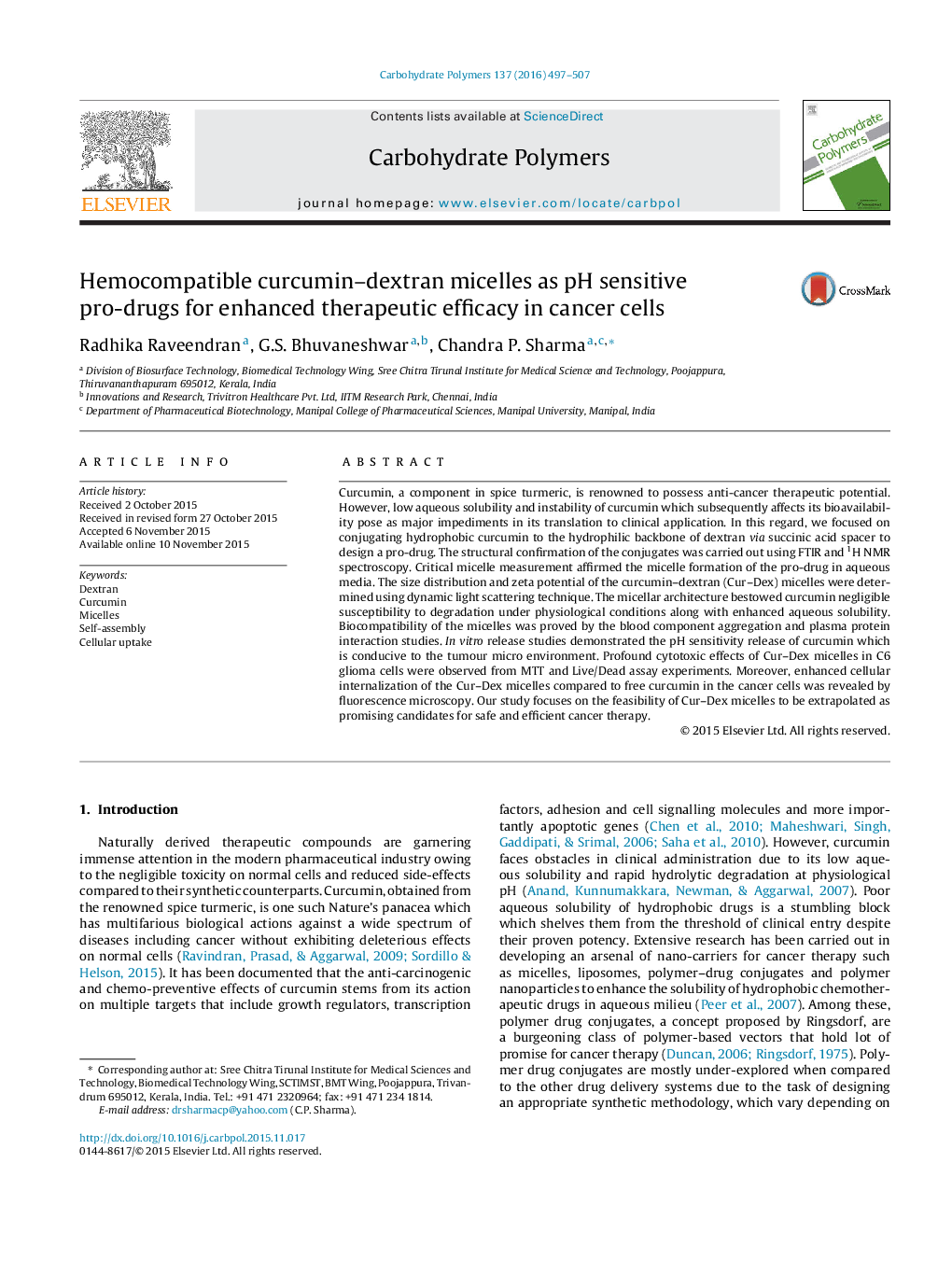| Article ID | Journal | Published Year | Pages | File Type |
|---|---|---|---|---|
| 1383191 | Carbohydrate Polymers | 2016 | 11 Pages |
•pH sensitive curcumin–dextran (Cur–Dex)conjugates were developed.•A combination of pro-drug and nano-micelle strategy was afforded with thesebio-compatible conjugates.•Cur–Dex micelles prevented curcumin from degradation and enhanced its aqueous solubility.•Rapid release of curcumin was exhibited at the acidic pH.•Enhanced cytotoxicity and efficient internalization were encountered in cancer cells.
Curcumin, a component in spice turmeric, is renowned to possess anti-cancer therapeutic potential. However, low aqueous solubility and instability of curcumin which subsequently affects its bioavailability pose as major impediments in its translation to clinical application. In this regard, we focused on conjugating hydrophobic curcumin to the hydrophilic backbone of dextran via succinic acid spacer to design a pro-drug. The structural confirmation of the conjugates was carried out using FTIR and 1H NMR spectroscopy. Critical micelle measurement affirmed the micelle formation of the pro-drug in aqueous media. The size distribution and zeta potential of the curcumin–dextran (Cur–Dex) micelles were determined using dynamic light scattering technique. The micellar architecture bestowed curcumin negligible susceptibility to degradation under physiological conditions along with enhanced aqueous solubility. Biocompatibility of the micelles was proved by the blood component aggregation and plasma protein interaction studies. In vitro release studies demonstrated the pH sensitivity release of curcumin which is conducive to the tumour micro environment. Profound cytotoxic effects of Cur–Dex micelles in C6 glioma cells were observed from MTT and Live/Dead assay experiments. Moreover, enhanced cellular internalization of the Cur–Dex micelles compared to free curcumin in the cancer cells was revealed by fluorescence microscopy. Our study focuses on the feasibility of Cur–Dex micelles to be extrapolated as promising candidates for safe and efficient cancer therapy.
